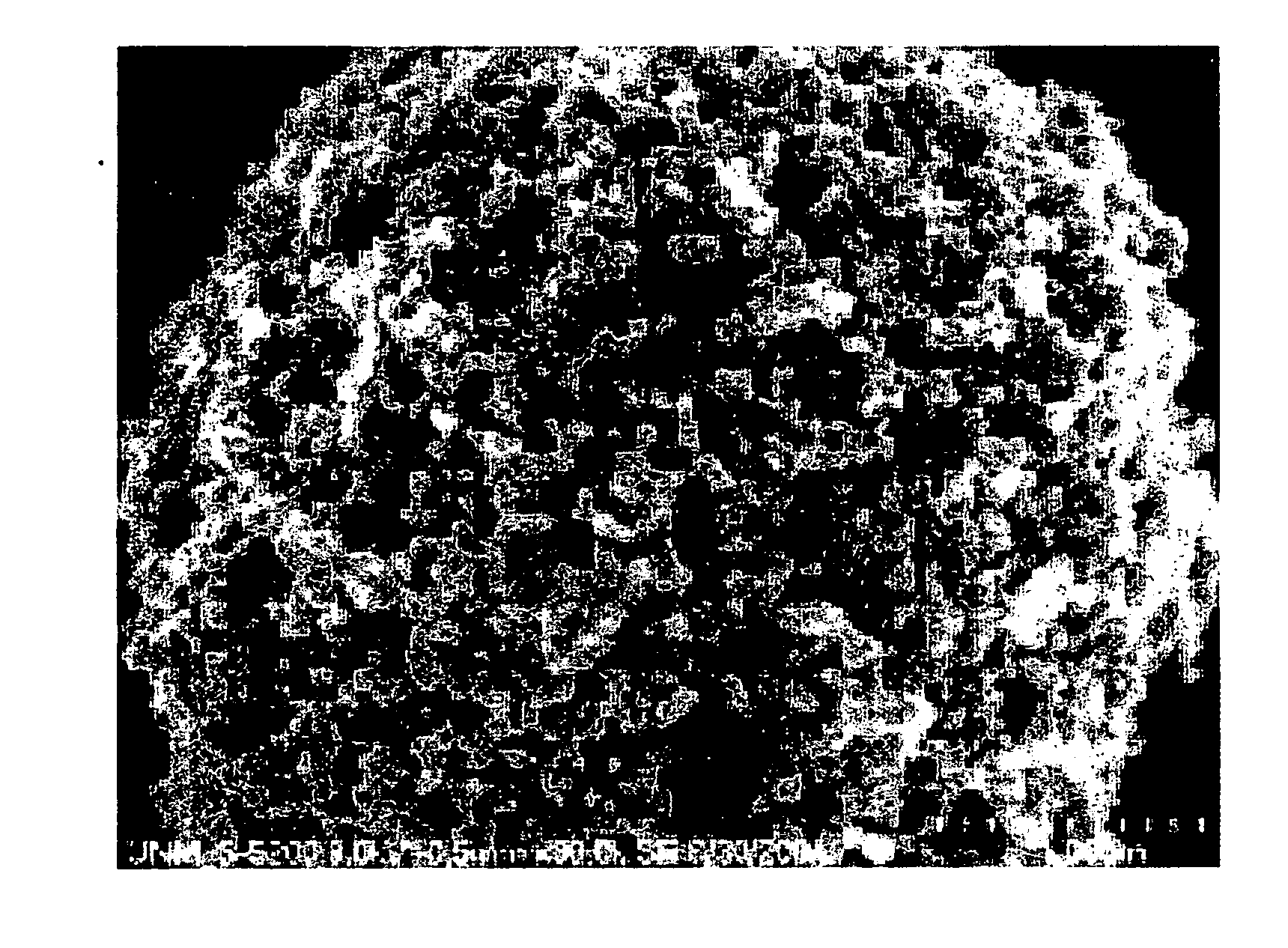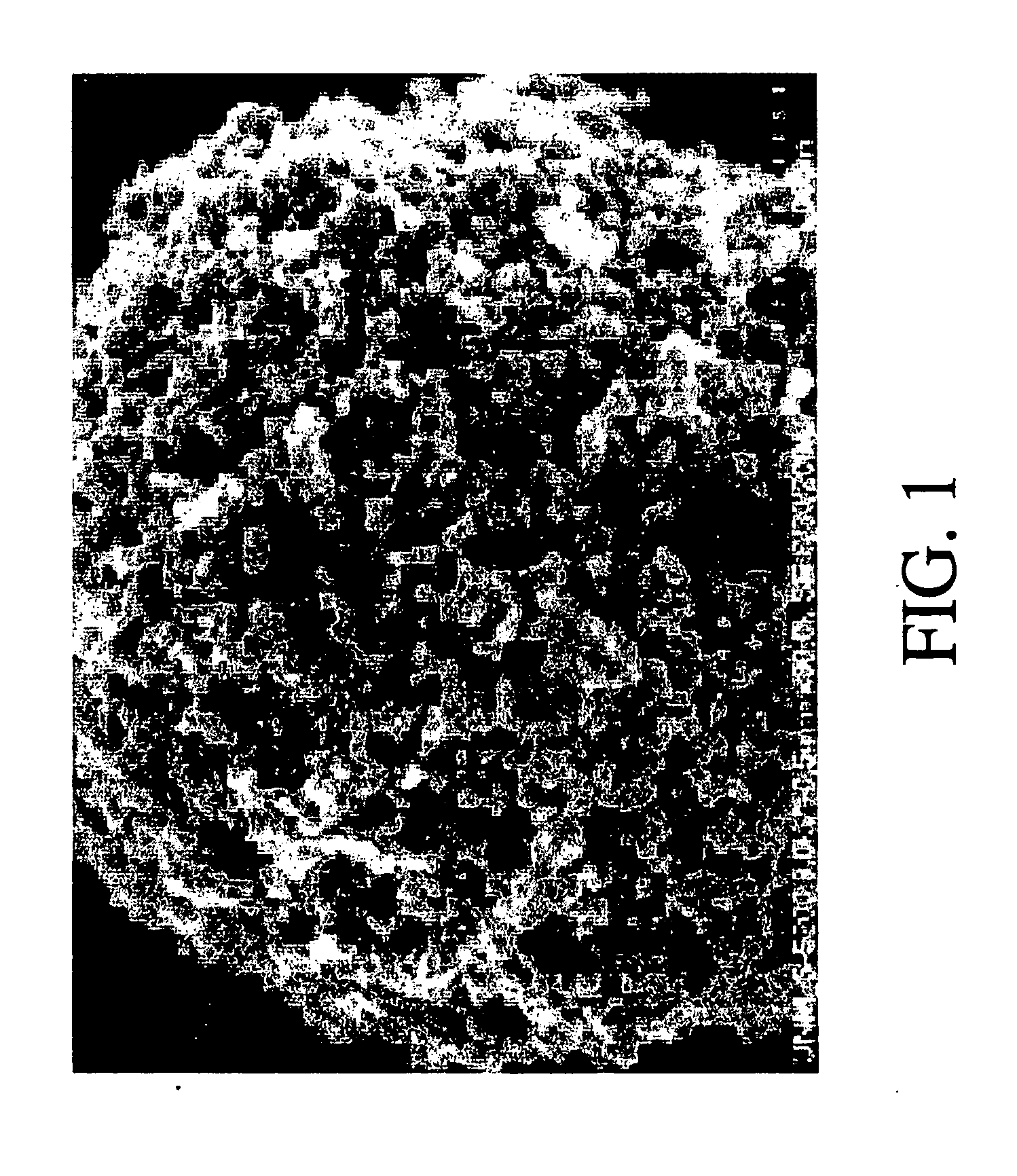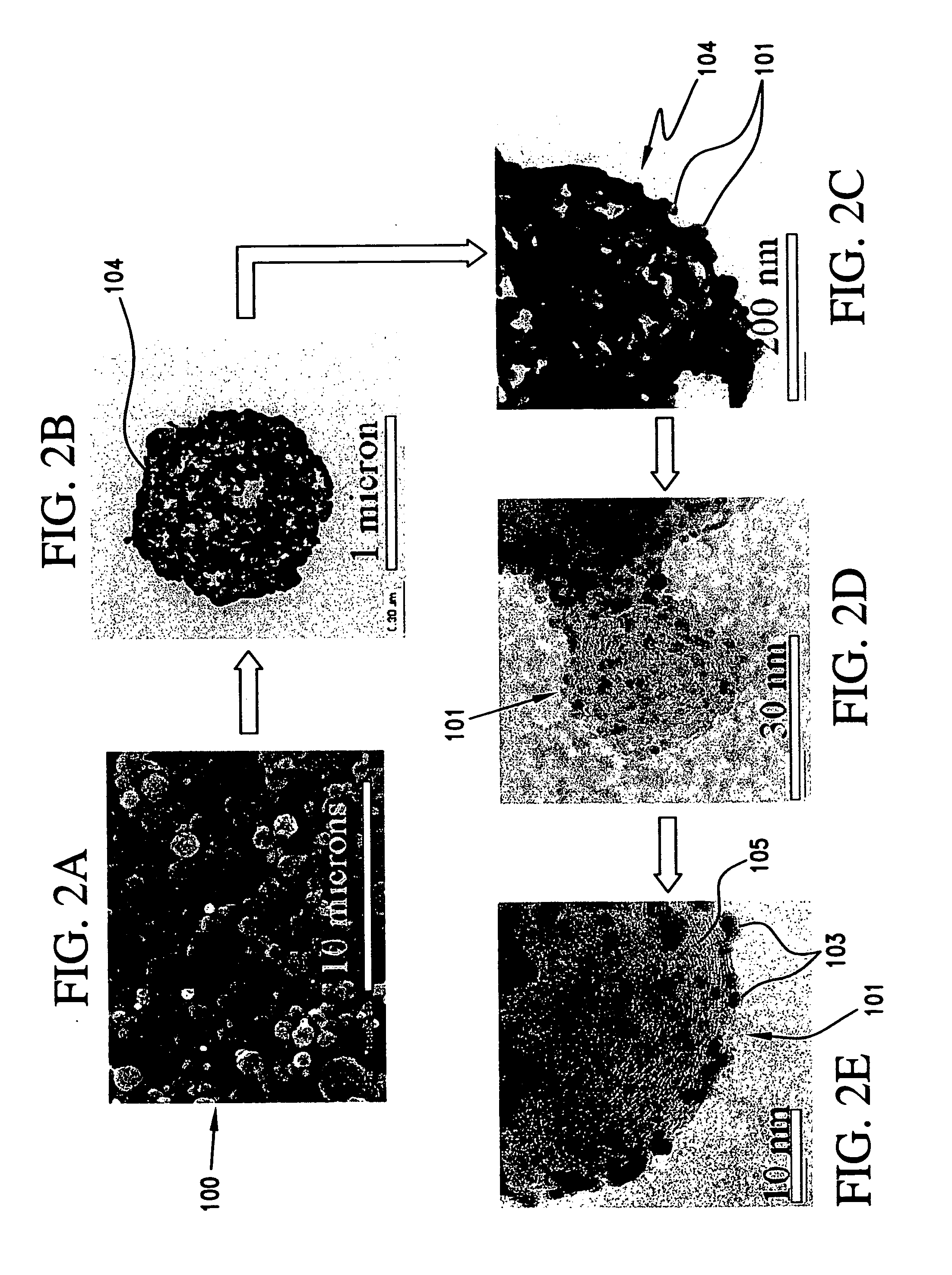Alloy catalyst compositions and processes for making and using same
- Summary
- Abstract
- Description
- Claims
- Application Information
AI Technical Summary
Benefits of technology
Problems solved by technology
Method used
Image
Examples
process examples
Examples 1-15
Synthesis of Pt—Co—Cu Alloy Nanoparticles on Carbon Substrate Particles
[0291] In Examples 1-15, electrocatalyst particles comprising platinum, cobalt and copper alloy nanoparticles disposed on a carbon substrate were synthesized according to one aspect of the present invention.
[0292] Specifically, 1.02 g tetra amine platinum nitrate, 0.64 g cobalt nitrate hexahydrate and 1.3 g copper nitrate hemipentahydrate were dissolved in 80 milliliters of distilled water, followed by the addition of 18.2 g of a carbon suspension containing 22 weight percent of Vulcan™ XC72R from Cabot Corporation in water. The resulting mixture was converted to an aerosol by ultrasonic spray nozzle using air as a carrier gas in a spray conversion apparatus, such as horizontal tube reactor or a spray dryer. The aerosol was processed in a horizontal tube furnace set up at a temperature of about 550° C. or can be alternatively produced on a spray dryer with inlet temperature of about 580° C. A blac...
examples 16-30
Synthesis of Pt—Co—Fe Alloy Nanoparticles on Carbon Substrate Particles
[0295] In Examples 16-30, electrocatalyst particles comprising platinum, cobalt and iron alloy nanoparticles disposed on a carbon substrate were synthesized according to one aspect of the present invention.
[0296] Specifically, 1.54 g tetra amine platinum nitrate, 0.58 g cobalt nitrate hexahydrate and 0.34 g iron acetate were dissolved in 80 milliliters of distilled water, followed by the addition of 18.2 g of a carbon suspension containing 22 weight percent of Vulcan™ XC72R from Cabot Corporation in water. The resulting mixture was converted to an aerosol by ultrasonic spray nozzle using air as a carrier gas in a spray conversion apparatus, such as horizontal tube reactor or a spray dryer. The aerosol was processed in a horizontal tube furnace set up at a temperature of about 550° C. or a spray dryer with inlet temperature of about 580° C. A black powder with composition of 20% Pt25CO37Fe38 / carbon was obtained....
examples 31-45
Synthesis of Pt—Fe—Cu Alloy Nanoparticles on Carbon Substrate Particles
[0298] In Examples 31-45, electrocatalyst particles comprising platinum, iron and copper alloy nanoparticles disposed on a carbon substrate were synthesized according to one aspect of the present invention.
[0299] Specifically, 1.53 g tetra amine platinum nitrate, 0.34 g iron acetate and 0.45 g copper nitrate hemipentahydrate were dissolved in 80 milliliters of distilled water, followed by the addition of 18.2 g of a carbon suspension containing 22 weight percent Vulcan™ XC72R from Cabot Corporation in water. The resulting mixture was converted to an aerosol by ultrasonic spray nozzle using air as a carrier gas in a spray conversion apparatus, such as horizontal tube reactor or a spray dryer. The aerosol was processed in a horizontal tube furnace set up at a temperature of about 550° C. or a spray dryer with inlet temperature of about 580° C. A black powder with composition of 20% Pt25Fe21Cu54 / carbon was obtaine...
PUM
| Property | Measurement | Unit |
|---|---|---|
| Temperature | aaaaa | aaaaa |
| Temperature | aaaaa | aaaaa |
| Temperature | aaaaa | aaaaa |
Abstract
Description
Claims
Application Information
 Login to View More
Login to View More - R&D
- Intellectual Property
- Life Sciences
- Materials
- Tech Scout
- Unparalleled Data Quality
- Higher Quality Content
- 60% Fewer Hallucinations
Browse by: Latest US Patents, China's latest patents, Technical Efficacy Thesaurus, Application Domain, Technology Topic, Popular Technical Reports.
© 2025 PatSnap. All rights reserved.Legal|Privacy policy|Modern Slavery Act Transparency Statement|Sitemap|About US| Contact US: help@patsnap.com



